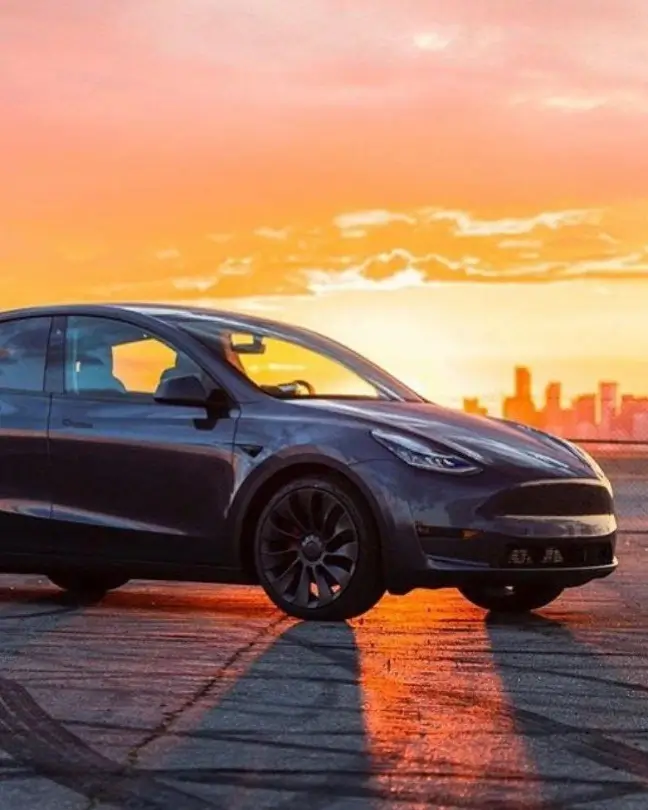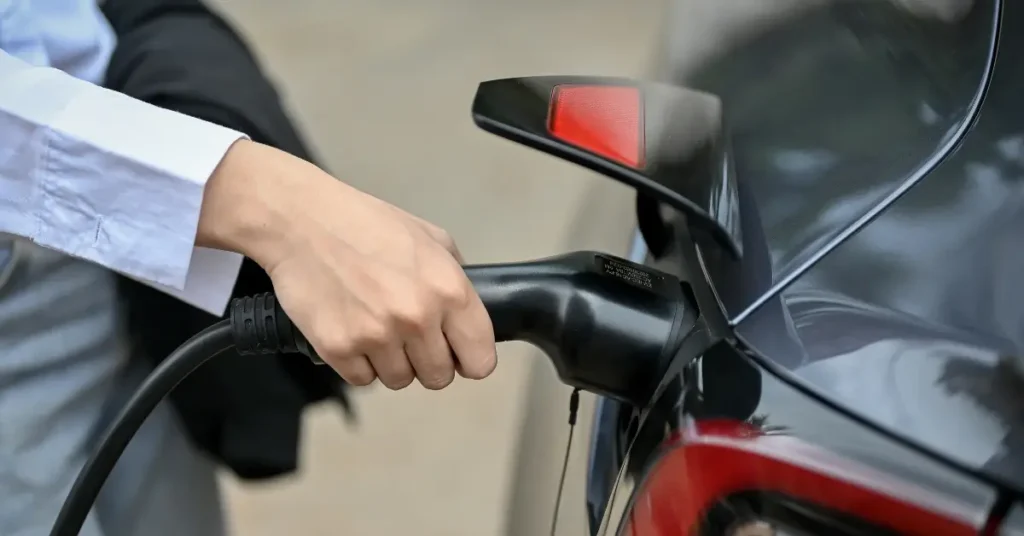I’ve always been intrigued by electric vehicles, and Tesla’s entire model lineup is a prime example. These cars are sleek, eco-friendly, and loaded with cutting-edge technology. A frequently asked question about electric cars revolves around charging, particularly when considering solar energy. So, let’s delve into it: How many solar panels to charge a Tesla?
Key Takeaways: How Many Solar Panels to Charge a Tesla
The answer to that question depends on a few factors. First, you need to consider the size of your solar panels and how much energy they can produce. You also need to think about how much energy you need to charge your car.
According to several sources, including Solar.com and 8billiontrees.com, you’ll need around 5 solar panels to charge a Tesla Model 3 battery enough to get 40 miles of range. However, this number can vary depending on the size of your solar panels and how much energy you need to charge your car. In the following paragraphs, we’ll dive deeper into the specifics of how many solar panels you need to charge a Tesla.
Can you charge your Tesla with solar?

The answer is a resounding yes! In fact, charging your Tesla with solar panels is not only possible, but it is also a great way to reduce your carbon footprint and save money on your energy bills.
To charge your Tesla with solar panels, you will need to install a solar system that is capable of producing enough energy to power your vehicle. The number of solar panels you will need depends on several factors, including the size of your solar system, the efficiency of your solar panels, and the amount of sunlight your location receives.
How many solar panels to charge a Tesla? According to EnergySage, you will need approximately 8 to 10 additional solar panels on top of a regularly sized solar system to charge your Tesla with solar energy. However, this number can vary depending on your location and the size of your solar system.
To ensure that you are producing enough energy to charge your Tesla, you should consult with a professional solar installer. They can help you determine the optimal size of your solar system and the number of solar panels you will need to charge your Tesla.
How many solar panels to charge a Tesla?
The number of solar panels required to charge a Tesla depends on various factors, such as the size of the solar energy system, battery size, and charging frequency.
Upfront costs
Before we dive into the number of solar panels required, it’s essential to understand the upfront costs. Installing a solar energy system can be expensive, but it’s an investment that pays off in the long run. The cost of a solar panel system depends on various factors, such as the size of the system, location, and installation costs.
Solar energy system
The number of solar panels required to charge a Tesla depends on the size of the solar energy system. On average, you would need anywhere from 44 to 89 solar panels with 300W rated power to charge a Tesla every day. The number of solar panels required decreases if you charge your Tesla every two or three days.
EV charger
To charge your Tesla with solar energy, you’ll need an EV charger. An EV charger is a device that converts the solar energy generated by the solar panels into electricity that can be used to charge your Tesla. The cost of an EV charger depends on the type of charger and the installation costs.
Tesla Battery Sizes
The number of solar panels required to charge a Tesla also depends on the battery size. Tesla has different battery sizes for its electric vehicles, ranging from 50kWh to 100kWh. The larger the battery size, the more solar panels you’ll need to charge your Tesla.
Total costs
The total cost of installing a solar energy system and an EV charger depends on various factors, such as the size of the system, location, and installation costs. However, it’s essential to remember that the cost of charging your Tesla with solar energy is significantly less than the cost of charging it with gasoline.
To determine the additional panels needed, I use a spreadsheet that allows me to select the EV models and estimate the daily consumption of kilowatt hours for each vehicle.
Assuming my panels are 385 watt panels with a system efficiency of 80 percent and 4.3 sun hours, I can calculate the number of panels needed for each car. By dividing the daily kilowatt hours by the panel size times the efficiency times the sun hours, I arrive at the number of panels needed for each vehicle.
For example, to charge my Model Y, I need about 3.1 to 3.2 kilowatts, which translates to about 8 panels. For the Cybertruck, I need about 7.5 kilowatts or approximately 19 panels. Combining the panels needed for both vehicles, I arrive at a total of about 27 panels.
Benefits of Charging a Tesla with Solar Panels

Environmental Impact
Charging a Tesla with solar panels has a positive impact on the environment. Solar energy is a renewable and clean energy source that does not emit any harmful pollutants, unlike traditional fossil fuels. By charging a Tesla with solar panels, we can reduce our dependence on non-renewable energy sources and contribute to a cleaner and greener planet.
Cost Savings
Charging a Tesla with solar panels can also lead to significant cost savings. According to EnergySage, the cost to charge a Tesla with solar energy is approximately $0.08 per kWh, which is significantly lower than the average cost of electricity in the United States. By installing solar panels, Tesla owners can also take advantage of federal and state tax incentives, which can further reduce the cost of the solar system.
In addition to cost savings, charging a Tesla with solar panels can also provide energy independence. Solar panels can generate enough energy to power a Tesla, which means that Tesla owners can rely less on the grid and avoid the fluctuations in electricity prices.
FAQ
How long would it take to charge a Tesla on a solar panel?
The time it takes to charge a Tesla on a solar panel depends on factors such as the size of the solar panel system, the battery capacity of the car, and the weather conditions. On average, it takes 8-12 hours to fully charge a Tesla using a 5kW solar panel system.
How to calculate number of solar panels required to charge battery?
To calculate the number of solar panels required to charge a battery, you need to know the battery capacity, the charging time, and the solar panel’s output. Divide the battery capacity by the charging time and multiply the result by the solar panel output to determine the number of panels needed.
Which type of solar panel is most efficient?
Monocrystalline solar panels are the most efficient type of solar panel, with an average efficiency of 20-22%. They are made from a single silicon crystal and have a uniform dark color. Polycrystalline and thin-film solar panels are less efficient but are more affordable and easier to manufacture.
If you liked this blog article about the topic: How Many Solar Panels to Charge a Tesla, don’t forget to leave us a comment down below to tell us about your experience.
Feel free to also check out our other Articles from the category “Solar System“





